Recent Publications
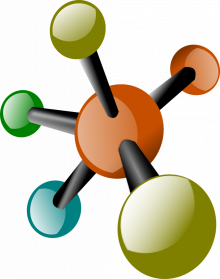
SMURF2-mediated ubiquitin signaling plays an essential role in the regulation of PARP1 PARylating activity, molecular interactions, and functions in mammalian cells (FASEB J .)
Poly(ADP-ribose) polymerase 1 (PARP1) is a key molecular stress sensor and response mediator implicated in multiple cellular functions in health and diseases. Despite its importance and intrinsic involvement in pivotal molecular and cellular processes, including DNA repair, transcription regulation, chromatin organization, and cell death, the regulatory mechanisms of PARP1 are poorly understood. In this study, we show that SMURF2, a HECT-type E3 ubiquitin ligase and suggested tumor suppressor, physically interacts with PARP1 in different cellular settings, directly ubiquitinates it in vitro and stimulates its PARylation activity in cells, the phenomenon that required SMURF2 E3 ubiquitin ligase function.
(Nataša Ilić, Yulei Tao, Sandy Boutros-Suleiman, Venkata Narasimha Kadali, Andrea Emanuelli, Gal Levy-Cohen, Michael Blank)
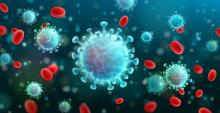
Shimon Edelstein, Shebly Tannous, Mevasseret T Jacobs, Hila Ben-Amram, Salman Zarka: BNT 13b2 Pfizer vaccine protects against SARS-CoV-2 respiratory mucosal colonization even after prolonged exposure to positive family members (J Hosp Infect .)
We wanted to investigate whether it was possible for vaccinated hospital workers to be carriers of SARS-CoV-2 as a result of prolonged, high-level exposure.
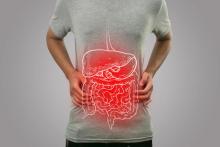
Amir Mari: Assessment and management of dysphagia and achalasia (Clin Med (Lond) . )
Dysphagia is a common symptom which can vary in severity and aetiology; at one end, it can be a benign inconvenience, on the other, there can be serious morbidity associated with malnutrition. It is crucial to identify those with mucosal and structural disease, including malignancy as a priority first....

Gassan Moady, Shaul Atar: (Quarantine-induced Stress Cardiomyopathy (Takotsubo syndrome) during the COVID-19 pandemic (Isr Med Assoc J . )
Takotsubo syndrome (TTS) is a non-ischemic cardiomyopathy characterized by an acute reversible left ventricular dysfunction with typical apical ballooning, usually with subsequent complete spontaneous recovery. TTS may be triggered by several physical and emotional stressors. The name Covidsubo was recently adopted to describe this emerging entity. TTS during quarantine may be a reasonable outcome of the overwhelming stress and fear of this pandemic. However, according to the current literature, conflicting results have been reported regarding the incidence of this syndrome during the first wave of the pandemic, and further studies are needed. High index of suspicion is needed to identify patients during the next waves of the pandemic, particularly given the need for minimizing imaging modalities and contact with the patients.
Describes two cases of TTS triggered by quarantine during the coronavirus disease-2019 (COVID-19) pandemic.
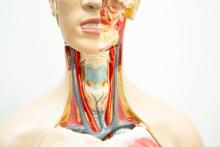
Neta Raveh Gildin, Hector Cohen, Ohad Ronen: Not All Bethesda 1 Thyroid Nodules Were Created Equal: Different B1 Subgroups (Endocr Pract .)
The Bethesda System for Reporting Thyroid Cytopathology is a uniform method used worldwide to report thyroid fine-needle aspiration (FNA) outcomes. This study focuses on the Nondiagnostic/Unsatisfactory category, designated as Bethesda1 (B1). The documented risk of malignancy for B1 nodules can vary significantly, implying this category is not homogenous and might be composed of different subtypes. Our hypothesis was that B1 subgroups (blood only, insufficient thyrocytes, cyst content) will vary in their malignancy rate.
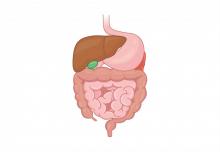
Shamaly, Hussein; On, Avi; Elkayam, Orit; Bayan, Hino: Monitoring Enables Progress: A Nationwide Quality Improvement Program in Children With Crohn's DiseaseJ Pediatr Gastroenterol Nutr .)
In this quality improvement program, named QPID, we constructed a nation-wide platform that prospectively recorded clinically important quality indicators in pediatric inflammatory bowel diseases (PIBD), aiming at improving clinical management across the country.
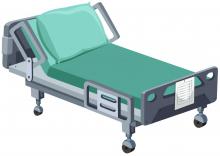
Khalaf Kridin: Editorial: Skin Autoimmunity (Front Immunol .)
Within this editorial, we aim to provide an overview of the 68 articles of the Research Topic.

Shai Bel: Loss of Fer Jeopardizes Metabolic Plasticity and Mitochondrial Homeostasis in Lung and Breast Carcinoma Cells (Int J Mol Sci . )
Metabolic plasticity is a hallmark of the ability of metastatic cancer cells to survive under stressful conditions. The intracellular Fer kinase is a selective constituent of the reprogramed mitochondria and metabolic system of cancer cells. In the current work, we deciphered the modulatory roles of Fer in the reprogrammed metabolic systems of metastatic, lung (H358), non-small cell lung cancer (NSCLC), and breast (MDA-MB-231), triple-negative breast cancer (TNBC), carcinoma cells.

Luiza Akria, Najib Dally, Shai Yagenah: Willingness and concerns of transfusion-dependent hematological patients toward the option of home transfusion therapy (Palliat Med . )
One of the main obstacles of providing home-based palliative care to transfusion-dependent hematology patients is the lack of home transfusions services. While healthcare professionals are concerned with safety and cost of home transfusions, the attitude of the patients toward home transfusions are mostly unknown.
Aim: To obtain quantitative data regarding the willingness and concerns of transfusion-dependent patients with hematological diseases toward the option of home transfusions.
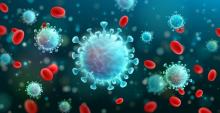
Khalaf Kridin, Erez Onn: Risk of COVID-19 Infection, Hospitalization, and Mortality in Patients with Psoriasis Treated by Interleukin-17 Inhibitors (J Dermatolog Treat . )
The risk of the infection and its complications under this drug class remains to be determined. Evaluates the risk of COVID-19, COVID-19-associated hospitalization, and mortality among patients with psoriasis treated by IL-17I.

Maya Azrad, Chen Shmuel, Tamar Leshem, Zohar Hamo, Keren Agay-Shay, Avi Peretz: Reduced Susceptibility to Chlorhexidine among Staphylococcus aureus Isolates in Israel: Phenotypic and Genotypic Tolerance (Antibiotics (Basel) . )
Antiseptic use for body decolonization is the main activity applied to prevent healthcare-associated infections, including those caused by S. aureus. Consequentially, tolerance to several antiseptics such as chlorhexidine gluconate (CHG) has developed. This study aimed to estimate the prevalence of CHG tolerance among S. aureus strains in Israel and to evaluate factors that may affect this tolerance.

Kamal Abu Jabal, Karine Beiruti Wiegler, Michael Edelstein: Convalescent plasma from people vaccinated after COVID-19 infection (Lancet Microbe . )
Plasma collected from previously infected people to passively transfer antibodies to protect or treat humans (convalescent plasma), has been successfully used since the late 19th century to treat diseases such as diphtheria, hepatitis A and B, and Ebola virus disease. The absence of effective treatment options for COVID-19 has led to the experimental use of convalescent plasma as a treatment to suppress the viral disease in early and advanced stages. Convalescent plasma has been widely used as a compassionate treatment for critically ill patients with COVID-19.
Despite evidence of the efficacy of convalescent plasma for treating other diseases, the largest meta-analysis of convalescent plasma for COVID-19 was inconclusive about its efficacy against mortality or symptoms in patients in hospital...
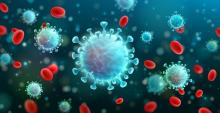
Gon Carmi, Alessandro Gorohovski, Sumit Mukherjee, Milana Frenkel-Morgenstern: Non-optimal codon usage preferences of coronaviruses determine their promiscuity for infecting multiple hosts (FEBS J . )
Circulating animal coronaviruses occasionally infect humans. The SARS-CoV-2 coronavirus is responsible for the current worldwide outbreak of COVID-19 that has resulted in 2,112,844 deaths as of late January, 2021. We compared genetic code preferences in 496 viruses, including 34 coronaviruses, and 242 corresponding hosts, to uncover patterns that distinguish single and "promiscuous" multiple host-infecting viruses.
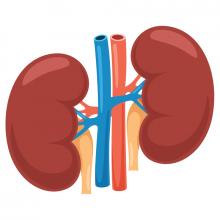
Karl Skorecki: A Personalized Approach to Chronic Kidney Disease and Cardiovascular Disease: JACC Review Topic of the Week (J Am Coll Cardiol .)
Cardiovascular disease is the most common cause of death in patients with end-stage renal disease (ESRD). The initiation of dialysis for treatment of ESRD exacerbates chronic electrolyte and hemodynamic perturbations. Rapid large shifts in effective intravascular volume and electrolyte concentrations ultimately lead to subendocardial ischemia, increased left ventricular wall mass, and diastolic dysfunction, and can precipitate serious arrhythmias through a complex pathophysiological process. These factors, unique to advanced kidney disease and its treatment, increase the overall incidence of acute coronary syndrome and sudden cardiac death. To date, risk prediction models largely fail to incorporate the observed cardiovascular mortality in the CKD population; however, multimodality imaging may provide an additional prognostication and risk stratification. This comprehensive review discusses the cardiovascular risks associated with hemodialysis, and explores the pathophysiology and the novel utilization of multimodality imaging in CKD to promote a personalized approach for these patients with implications for future research.



